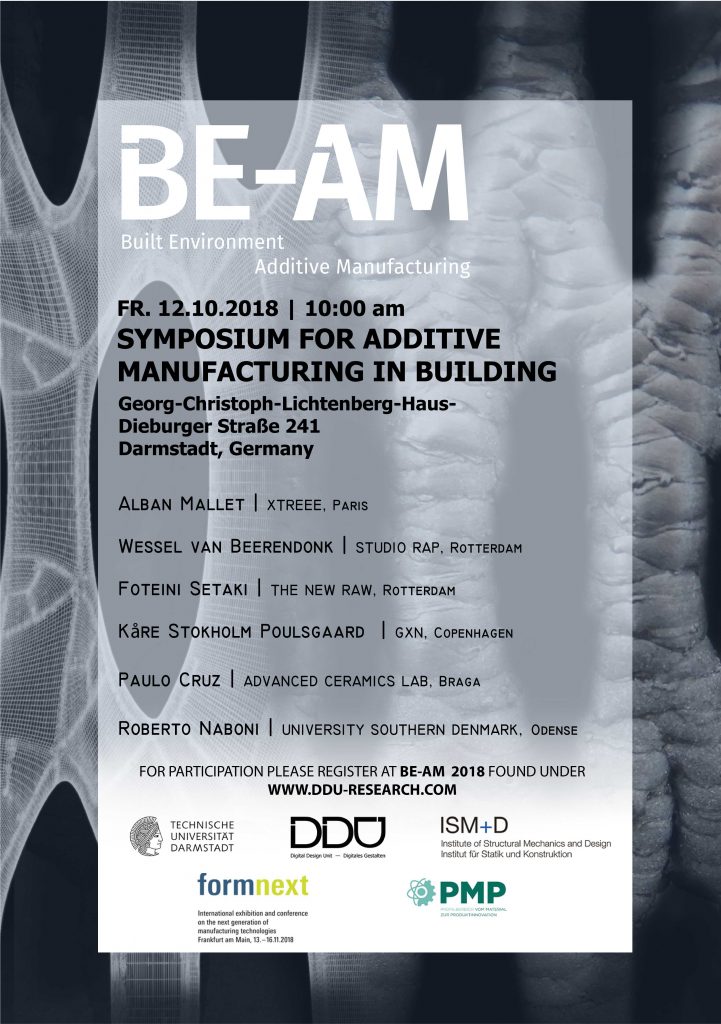Formnext and the Technical University (TU) Darmstadt have announced a joint venture intended to promote the application of industrial 3D printing by the construction sector
Over the coming years, use of additive manufacturing by the construction industry will receive increased attention at the annual Frankfurt based trade show. Formnext has grown to become one of the leading events on the 3D printing calendar. While additive manufacturing for construction is at a relatively early stage, the organizers are keen to ensure this topic is well represented.
Added value of 3D printed applications
Sascha F. Wenzler, director of the formnext division at the trade fair organizer Mesago Messe Frankfurt GmbH, said, “Through the cooperation with TU Darmstadt we want to make an important contribution, so that even in the construction industry the innovative potential of additive manufacturing can be made more widely usable.”
Oliver Tessmann and Ulrich Knaack are professors at TU Darmstadt and will be actively involved in the project. Having previously launched the Built-Environment Additive Manufacturing Symposium (BE-AM), Tessman and Knaack have conducted numerous research projects looking at the use of different materials and manufacturing methods.
Professor Knaack, from the Institute for Structural Mechanics and Design, ISM+D said, “Our aim is to promote additive activities in the construction industry, strengthening their structure and concentration.
“We are also pleased that, through the collaboration with Formnext, we will gain even better contact with the other sectors of industry in which additive applications are already widely used. Because, overall, construction will become more efficient thanks to additive manufacturing. Companies that use this technology in construction will be able to benefit in economic terms.”
Professor Oliver Tessmann (Digital Design Unit, DDU) added, “The construction industry is joining with other application industries in the common search for the added value of 3D printed applications. We want to print intelligent forms and designs that were not previously possible in this way. In this respect, we can certainly benefit from existing experiences and commonalities.”

3D printing for the construction industry
Elsewhere, the application of industrial 3D printing technology for construction is seen in a growing number of projects. For example, Barcelona’s IAAC has successfully installed 3D printed concrete bridges in Spain.
More recently, Italy’s WASP released the Infinity 3D printer as part of an ongoing project to develop eco-friendly housing. In addition to the equipment required to 3D print buildings and structures, material research is also underway. Such projects include an investigation into the microstructure of concrete and the use of bio-inspired architecture at Purdue University.
Visitors to formnext 2018 will be able to attend a presentation scheduled for 3:30 pm on November 14 that will address the theme of additive manufacturing in the construction industry.
For all of the latest 3D printing construction new subscribe to our free 3D Printing Industry newsletter, and join us on Facebook and Twitter.
Start a new career or find additive manufacturing experts, visit 3D Printing Jobs now.
Featured image shows the entrance to Messe Frankfurt, home to formnext. Photo by Michael Petch



